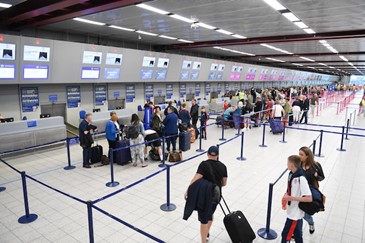Traveling opens a child’s eyes to the new, the different, and the unforgettable.
It can make children not just see the world but see themselves in a different light. There are new cultures to take in, food to try, and sounds to hear. Traveling is always an adventure for children. It can also be challenging for the adults along for the ride.
Kimberly Anderberg provides some ways to approach traveling with children to ensure everyone on the trip has the best time possible.
Start Planning Early
It’s not groundbreaking to suggest planning a trip early, but it’s essential when children are involved. Choosing an engaging destination is key to a successful and enriching trip for children.
Talk as a family about ideas of where to go and why. Where will both children and adults have fun? Is the goal to relax or have as many unique experiences as possible? Is it better to stay at a hotel or find a home to rent that may be a better fit for a larger group?
Arriving at a decision together makes sure that everyone traveling will be on the same page regarding expectations.
Consider All Ages
What appeals to a 3-year-old may not appeal to a 6-year-old, and what appeals to a 6-year-old will pretty much never appeal to a 12-year-old.
There’s no one-size-fits-all when it comes to travel destinations for children. Sure, all ages love the beach, but not all will love theme parks, museums, or historical sites.
This may take a bit of homework, but one goal may be finding one particular destination where there are multiple attractions to accommodate all ages in your travel party.
Be Flexible
There can certainly be expectations for a trip, but one needs to be expecting the unexpected. Nothing ever goes completely right on a vacation, especially if children are involved. Reservations are missed, attractions may close early, and the weather can make children antsy.
Having backup plans in mind will make things go smoothly even when facing travel obstacles.

Don’t Focus on the Familiar
Children may crave consistency, but trips should be heavy on new experiences for children. Do something out of the ordinary when discovering a new place. Try something as simple as trying a new meal, or ethnic food.
Why spend a lot of time in tourist souvenir shops when a hike in a national park is calling?
Don’t Push It
Since traveling is so exciting (and hard for some adults to take the time off to do), it’s easy to want to do as much as possible on a vacation. That’s why it’s important to be realistic and not push the entire family.
If children are tired, take a break. The family will have a much better time at a certain attraction once everyone is rested and engaged.
If children say they don’t want to do something, ask them first what they would like to do otherwise, pulling from a list of places the family talked about checking out before hitting the road.
Remember that the overall goal is for travel to be a learning experience for children. But most of all it should be fun.





